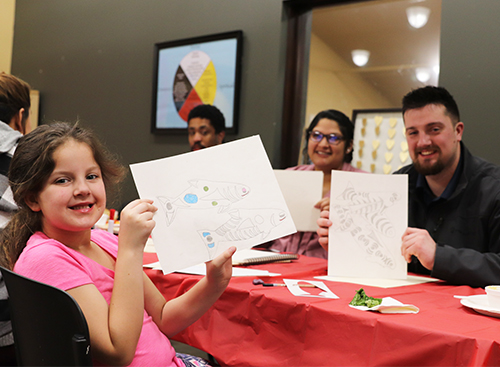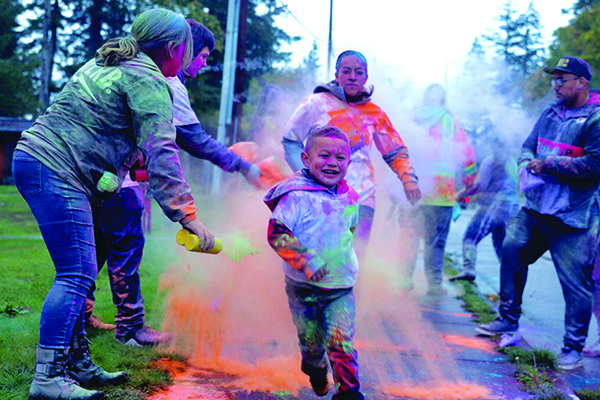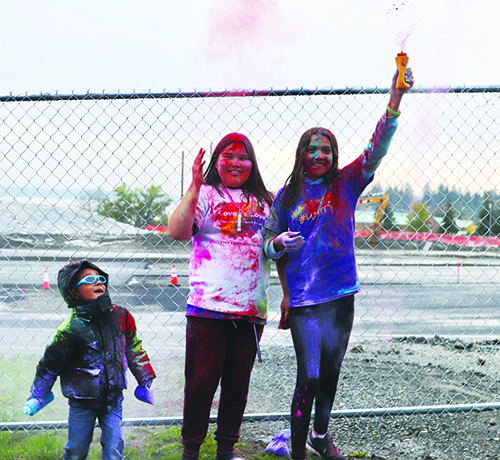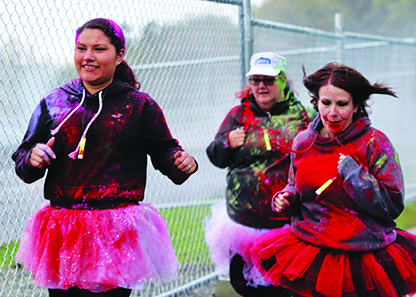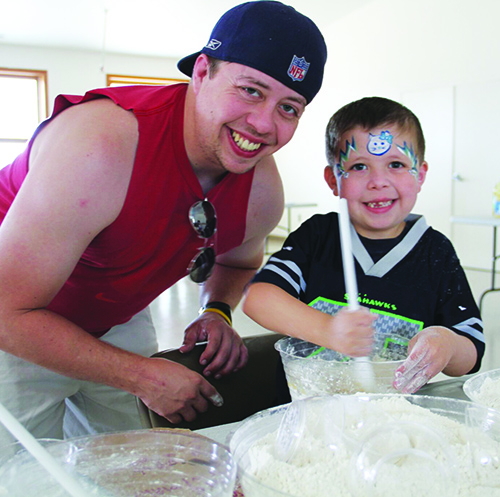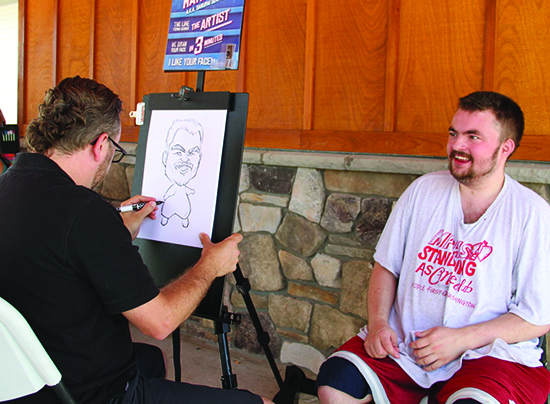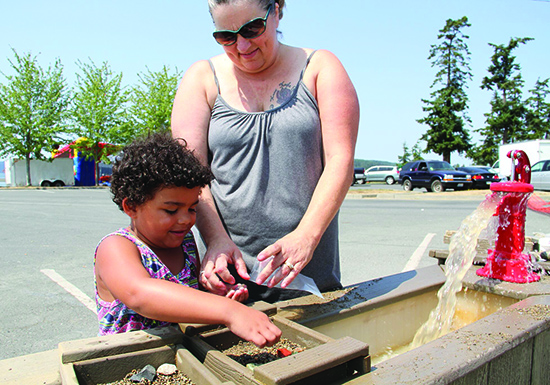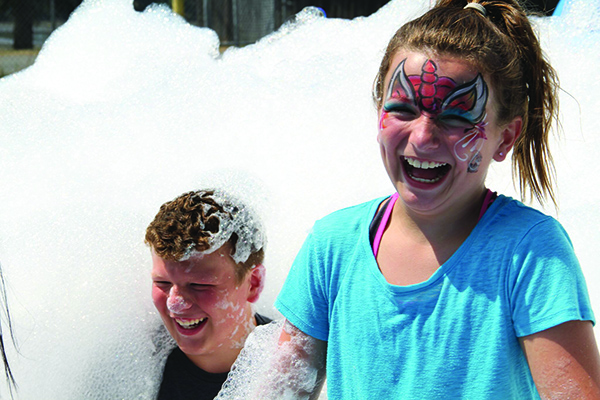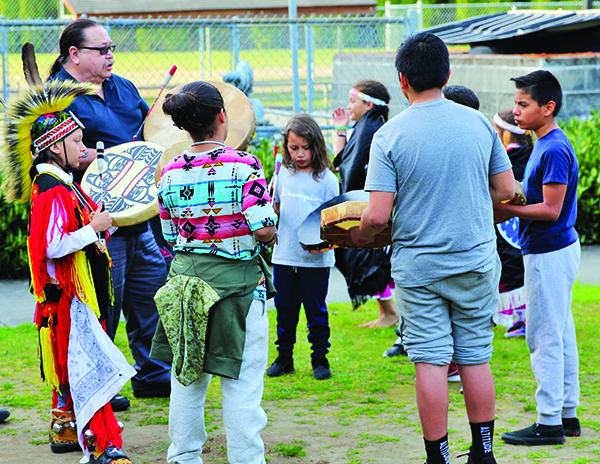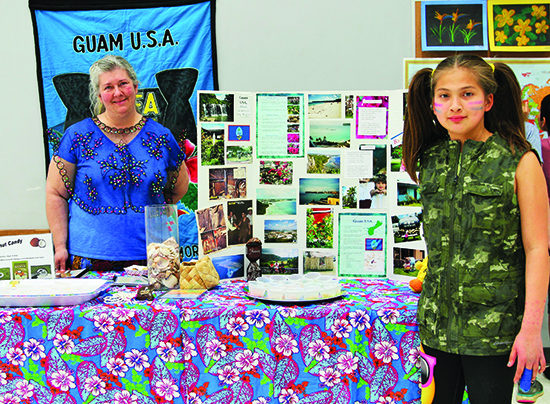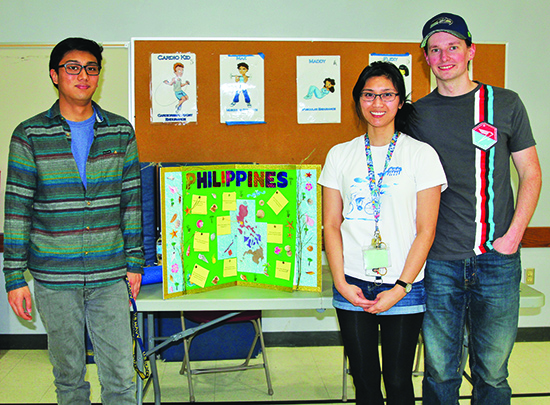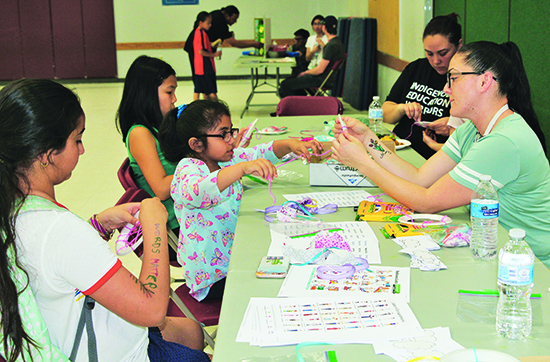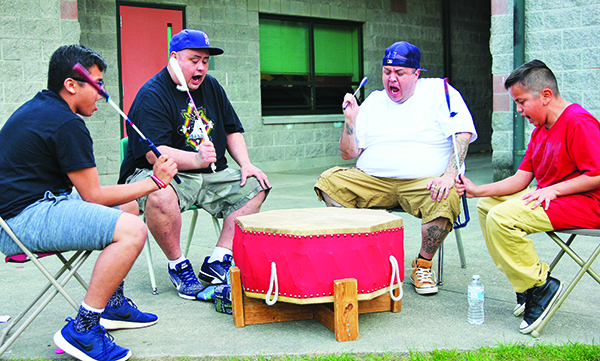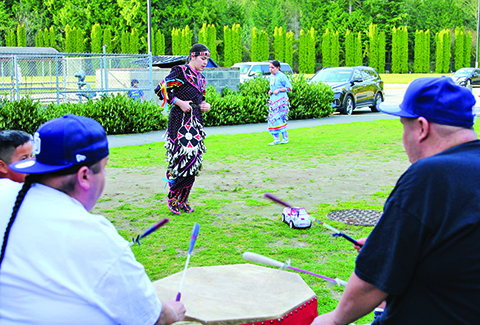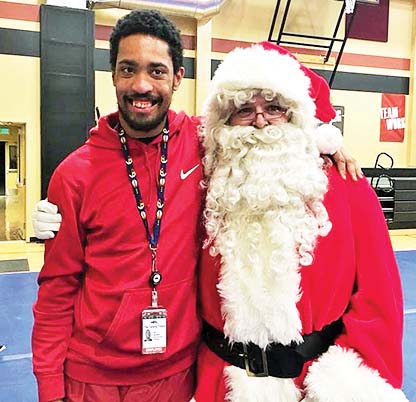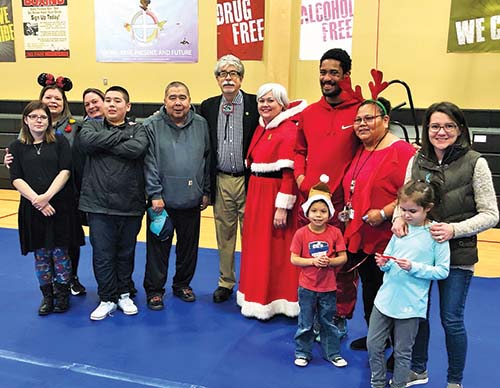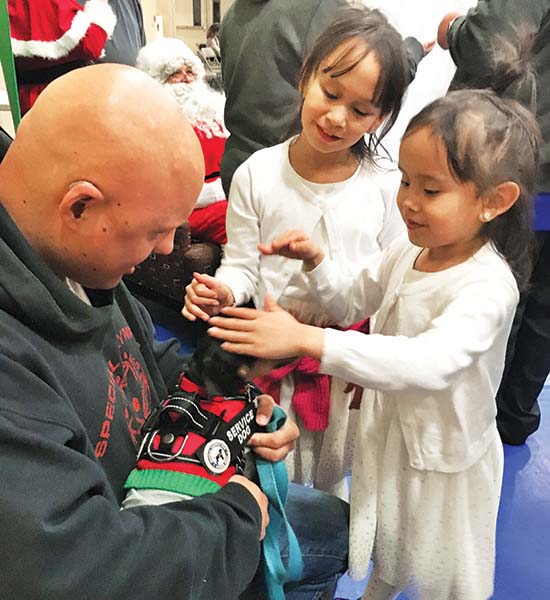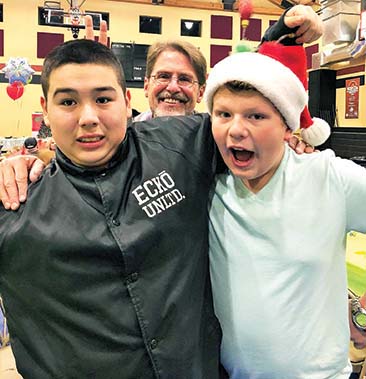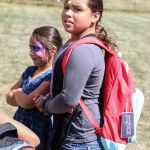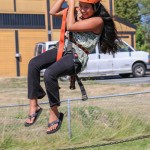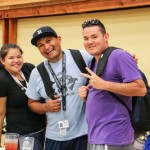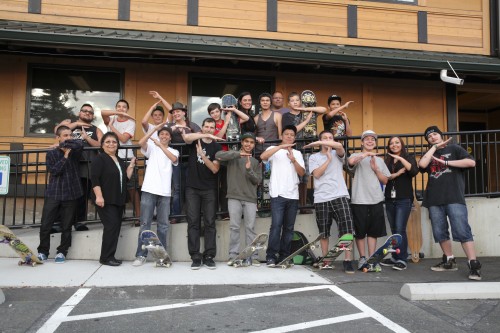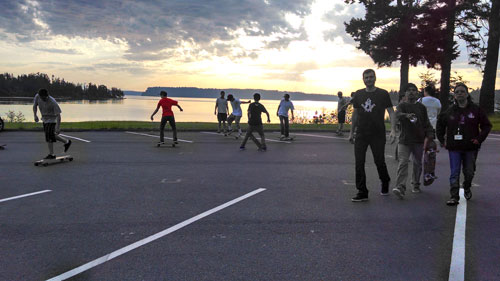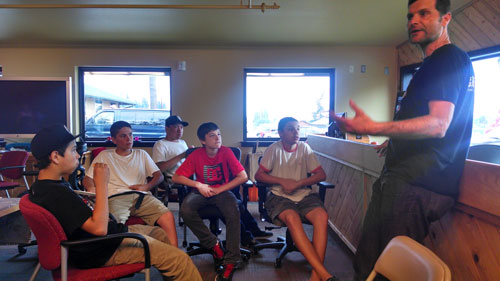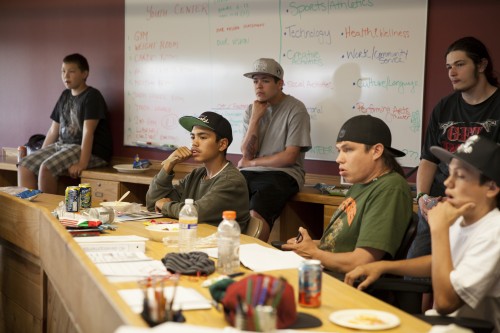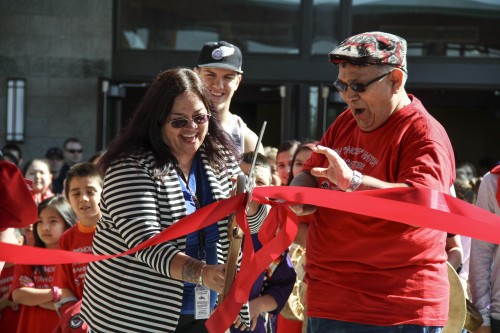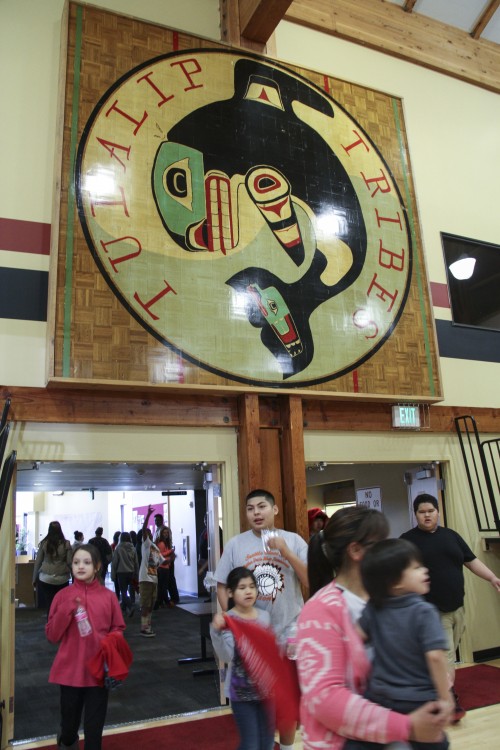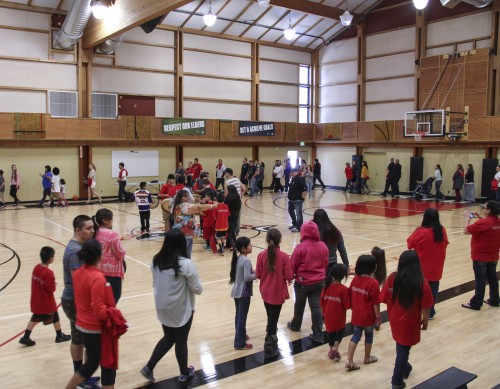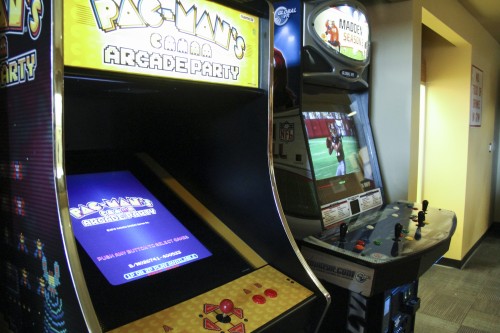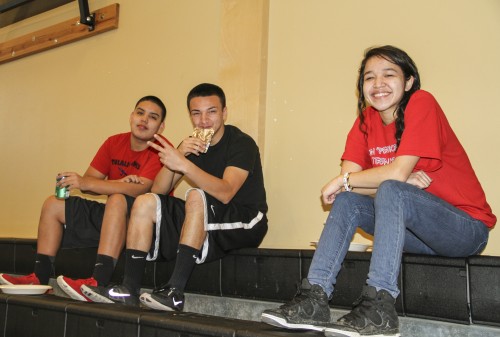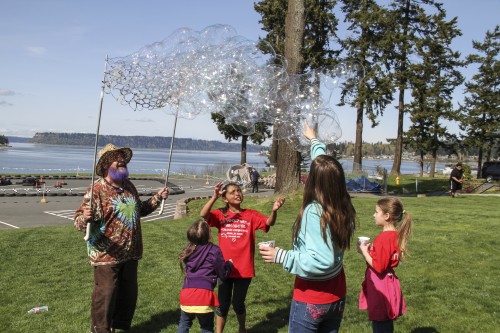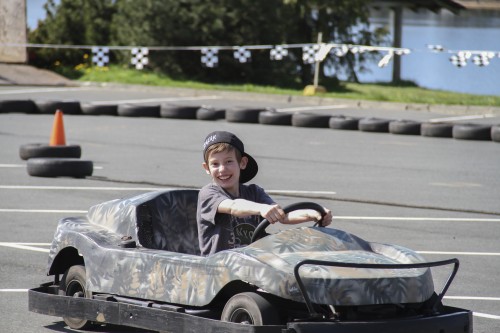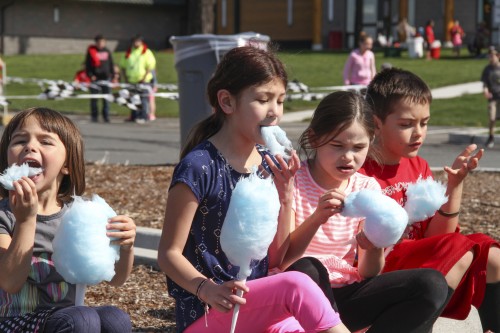By Kalvin Valdillez, Tulalip News
The people of Tulalip have a strong connection to their artwork. A walk through one of their many establishments, whether it be the Tulalip Resort Casino, the Hibulb Cultural Center or the Tulalip Administration building, you are sure to be blown away by the Coast Salish masterpieces that are proudly on display. Such art includes masks, story poles, drums, and art prints, all of which depict stories about the rich history and traditional lifeways of the Tulalip people.
Recently, the Don Hatch Youth Center began incorporating more artwork throughout their hallways. Upon entry to the center, you are now greeted by a totem pole that stands at the center of the lobby, and if by chance you glance up, you will notice traditional paintings of a variety of animals lining the ceiling. If you’re lucky enough to find some free time around 5:00 p.m. on a Tuesday, you can learn how to create traditional Salish art at the youth center by attending their weekly Honor Our Culture Night.
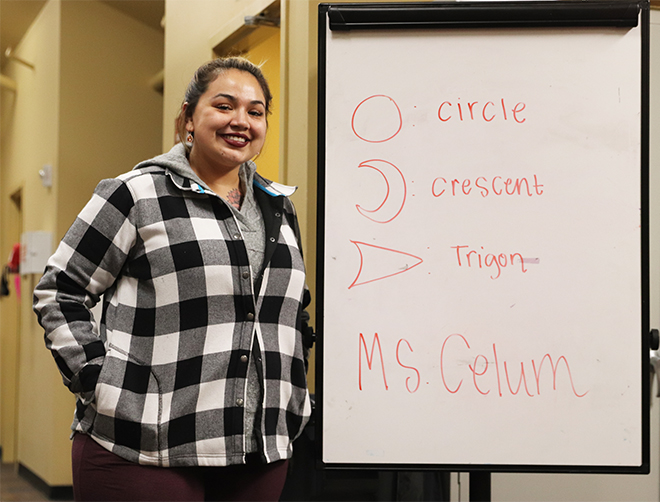
On the evening of February 26, a group of fifteen young adults rushed up to the second floor of the youth center. As the kids settled in and found their seats, they were given blank sheets of paper and pencils to practice three shapes that comprise most, if not all, art of the Pacific Northwest tribes; the circle, the crescent and the trigon. As the students worked on the shapes, Lushootseed Language Instructor Celum Hatch shared the Tulalip story, The Bear and the Ant, incorporating the traditional language into the lesson plan. After drawing a few designs and listening Celum’s story, several kids left the room to participate in other activities at the center while a handful of students stayed behind to perfect their artwork.
“This was my first time coming to Culture Night,” expressed young participant, Susan O’Day. “We drew animals and shapes today. I drew an owl with lots of detail using the crescent, circle and trigons. I want to come to more Culture Nights because I had a lot of fun learning about the art.”
Honor Our Culture Night focuses on the vast elements of Coast Salish art while simultaneously explaining the history of each project. Currently, Culture Night is in the middle of a three-part drawing series that was actually inspired by the youth who requested the class in order to explore their heritage.
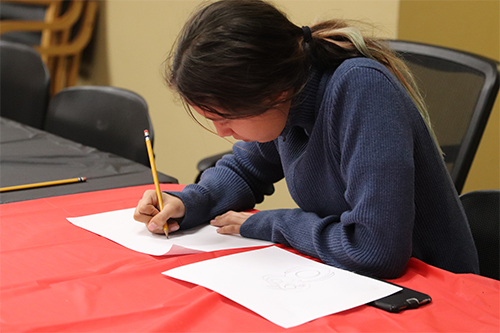
“It’s a program that brings the community together, people of all ages from youth to elders,” explains Youth Services Activity Specialist, Rachel Steeve. “We do different activities; we’ve done a few drum making classes where we also painted them, we’ve done cedar weaving, beadwork like necklaces and we did moccasins last year. I ask the community what they want to do and I’m always surprised by the answers, it’s always something different. I didn’t realize there were so many cultural activities and crafts. A lot of times people are making their art for the first time. And with our traditions and our teachings, your first project is the one you put the most love and work into and then you gift it away. It’s nice to see their relatives wearing and showing it off, being so proud of that work.”
For the past three years, the night of traditional art has been organized by Rachel who watched the class evolve since it originally debuted in 2013. Not only has participation grown from the youth within the center, word has spread throughout the community and adults and elders now often frequent the upstairs classroom to learn more about the artwork. Many students are also young Tulalip tribal members who live off the reservation as well as Wellness Court participants who are fulfilling their cultural hours required by the court.
“My absolute favorite thing I get to see is the elder and youth classes,” says Rachel. “We do specific activities for the elders and youth, like our past drum making class. It’s nice to see them together. The kids just listen, they slow down for a minute and take in everything the elders have to say. I’m always surprised by the people who are interested in the classes, those who we don’t necessarily get a chance to see at the cultural events here, they come and are so enthusiastic and want to learn. Or, they already know and they want to help and assist others. I think it gives them a sense of happiness and pride of their knowledge, that they’re able to pass that down to other people.”
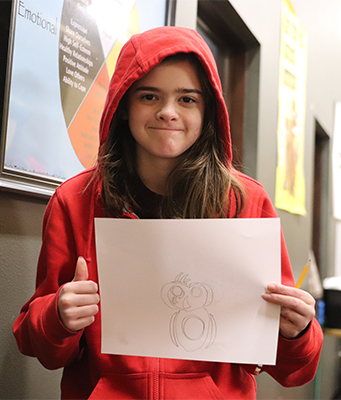
The students get to keep their finished projects which in turn can lead to further cultural enrichment, allowing the artists to use their work at traditional ceremonies. For instance, past Culture Night participants have used their handmade drums at local events including several coastal jams and drum circles. Rachel states that seeing the art being used in the community, as it was originally intended centuries ago, is a great way to connect the future generations with their ancestors.
“Our goal for the spring is to get a regalia class going so we can make regalia for the Salmon Ceremony and Canoe Journey. We have a drum class here every Friday and they just jam out, a group of boys come every week. We’ve also had a couple drums that we made and donated to the Native liaisons at the schools. At MMS (Marysville Middle School), Saundra Yon-Wagner, the Youth Services Native Liaison, has two drums that we made during these classes and the kids fight over who gets to use them every day, because during lunch they have a daily drum session. It’s nice to see that they’re actually being used enthusiastically.”
Ask any Coast Salish artist, carver or storyteller, there is a great deal of spiritual work that goes into constructing these projects. Youth Services wants to continue to produce items where the people can experience that medicine and continue to pass down that knowledge generation after generation.
“There’s a lot of importance in carrying on these cultural activities,” Rachel states. “As years go on, we get busy and we either forget or push back our teachings. Our community needs programs like these because whether it’s a community or personal issue, everybody needs a little healing and working with your hands is healing. I want to extend our hands out from Youth Services and welcome and invite everyone. I ask that people invite their family, don’t just come yourself. Bring your cousin, your uncle, your auntie and bring an elder who doesn’t have the means to get down here or needs a little extra company.”
Honor Our Culture Night is held every Tuesday at the Don Hatch Youth Center from 5:00 p.m. to 7:30 p.m. For more information, please contact the Youth Center at (360) 716-4909.
